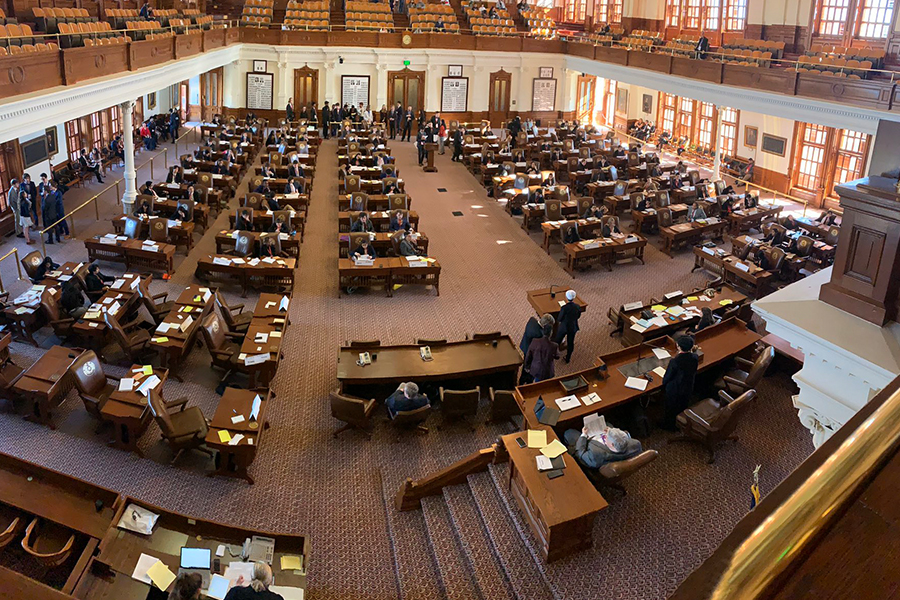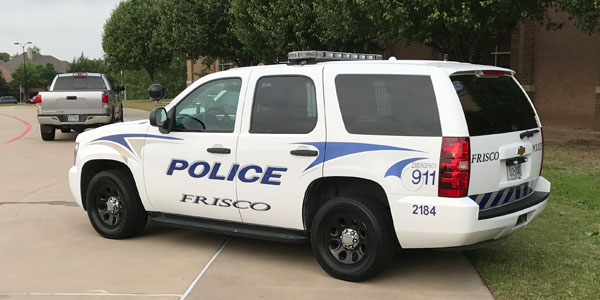Two Sides to the Story: Texas House Bill 3


Having armed security officers present on campus, and increasing funding would undoubtedly increase security and assuage safety concerns.
According to a survey conducted by the Pew Research Center in 2022, 49% of parents believed that “having police officers or armed security stationed in schools” would be extremely effective in averting school shootings, and 33% of parents believed that they would be somewhat effective. An article by Edweek referenced a “poll [which] showed that 58 percent of public school parents surveyed “strongly supported” armed police in schools” and that “around 80 percent of the 1,008 adults surveyed…also said they “strongly/somewhat support” armed police in schools, metal detectors, and mental health screenings of students as school safety measures.” These beliefs are not unfounded; in fact, they are far from it. The Department of Justice, in a report published in 2020, points out that “the ability of… SROs to establish trust… with students has been demonstrated to prevent school shootings” and that “there have been numerous documented instances of SROs directly intervening to prevent or quickly mitigate active school shootings.” Furthermore, the DOJ identifies “School-Based Law Enforcement,” such as the kind referenced in HB 3, as one of the “ten essential actions to improve school safety.” By ensuring that each campus has at least one armed security officer, as outlined in HB 3, school safety and security can be tremendously improved, creating a safer environment overall for both students and staff.
Stationing a police officer in each school across Texas can be a challenge, as Texas had 8,973 campuses, as of 2021-22, according to the TEA. However, this bill also allows “district employee[s] who… ha[ve] completed school safety training provided by a qualified handgun instructor certified in school safety…[to carry] a handgun on the employee’s person while on school premises.” This provision can prove to make schools even safer. In fact, an article by Edweek noted that “a robust 45 percent [of adult Americans] said they would favor arming teachers as a safety strategy in a new poll from PDK International.”
Not only does HB 3 mandate armed security officers on campus, but it also increases the “school safety allotment” for districts by both providing $15,000 of additional funding per campus and providing “$10 for each student in average daily attendance, plus $1 for each student in average daily attendance per every $50 by which the district’s maximum basic allotment exceeds $6,160, prorated as necessary,” providing additional avenues for districts to improve security. In a district as large as FISD, the amount of funding the district would receive would be tremendous. With 77 campuses, 67,226 students, and a 99.3% attendance rate, FISD would get at least $1,822,554 under this bill, if not more. This allotment can be put towards projects to improve school safety, such as standardized student ID badges.
The allotment can also be put towards paying the new employees districts will have to hire as part of this bill, as recommended by the HRO bill analysis. Since the bill mandates at least one armed security officer per campus and the average salary of an SRO in Texas is estimated to be $77,010, districts could be facing a substantial increase in costs without even considering the possible costs of the “new safety and security measures” HB 3 mandates. The funding provided by this bill through the school safety allotment can go a long way when it comes to adding armed security officers to a district’s payroll.
Although this bill doesn’t address all the safety concerns in schools, it still makes an admirable attempt to fix some of the issues schools face. Co-author of the bill, State Representative Joe Moody, who represents District 78, in an interview with Fox 4 News, noted that “there were multiple systemic failures that led to that horrific tragedy [in Uvalde, o]ne of [which] was the security, or lack thereof, on that particular campus” which is an issue “not unique to Uvalde… [and] is a problem across the state.” He went on to say that “this [bill] is one of the ways that we need to address school safety[, and though o]ne bill does not solve all the problems… it is certainly an important piece of the puzzle.”
By increasing school safety funding and adding more armed officers to schools, House Bill 3 aids schools and school districts in making campuses safer and more secure.

Despite the apparent benefit of having armed security on campus and increasing funding, the costs of these actions would outweigh the benefits.
Although many parents believe that armed security officers would be an effective way to combat school shootings, studies show that armed security officers may not be as effective as once thought. An article by The Trace published in August, points out that of “133 school shootings and attempted school shootings between 1980 and 2019… [in which a]t least one armed guard was present in almost a quarter of cases…researchers found no significant reduction in rates of injuries in these cases”. Additionally, this bill allows districts to appoint district employees, who have undergone the appropriate training, as armed security officers who are required to carry “a handgun on the[ir] person while on school premises”. Now, statistics show that school shootings are often committed by students or alumni. However, the prospect of facing off against a student with a gun can be distressing and the simple truth is most teachers do not want to be armed. Finally, asking schools to hire the new employees required to meet the demands of this bill is unreasonable. Many districts have already claimed exemptions to the bill, including FISD, Hays CISD, SAISD, and HISD, as they are unable to fulfill the armed security officer requirement. So, while stationing armed security officers in schools appears to serve as a deterrent to school shootings, it instead places an additional burden on teachers, school districts, and police departments, while not guaranteeing increased safety, making it truly unnecessary.
Although HB 3 would significantly increase the “school safety allotment” for districts, it would negatively impact stakeholders in one of two ways: a likely increase in property taxes or a budget cut.
The TEA categorizes the school safety allotment as a Tier One Entitlement, meaning that it’s funded both by property taxes and the state. According to a report published by the TASB in 2022, “the greater a district’s property value per student, the greater its local share and the smaller the state’s share of Tier 1 funding,” meaning that “the wealthiest districts will generate their entire Tier 1 entitlement with local property tax revenue”. Although Frisco ISD has provided a 41-cent decrease in its tax rate since 2017, this may not be something that can continue to drop as residents could eventually be faced with property tax rates to create funding to secure already-secured schools.
Even with the recent cut in property taxes, the state may be forced to provide a larger than expected portion of the school safety allotment. Currently, FISD generates more than two-thirds of its funding from property taxes. A reduction in property tax rates, as aforementioned, could have a significant impact on school funding, forcing the state to pick up the slack. Although these tax cuts were made in the wake of more than an $18 billion dollar surplus, much of this “historic budget surplus [is to] be allocated toward driving down school district property tax rates, increasing homestead exemptions for Texas homeowners, and increasing Franchise Tax exemptions and appraisal caps for small businesses”. As the state’s funds are limited and “the cost to the state of the bill for the biennium [was projected to] be $292,978,263 in general revenue related funds” several months prior to the enactment of the tax cuts, the state may be forced to redistribute funds to ensure schools get the new school safety allotment.
Currently, the school-safety allotment is derived from general revenue related funds, which also supports the Available School Fund, which in turn funds the Foundation School Program, both of which are a key part of FISD’s revenue; combined, they are estimated to make up almost $70 million, or a tenth of FISD’s total revenue, this school year. Since the FSP, ASF, and school safety allotment are all derived from the same sources, the amount of revenue FISD makes through these avenues may take a significant hit, leading to budget cuts, especially in the wake of a $24 million deficit.
Either way, the increase in school safety allotment created by HB 3 proves to be more of a detriment to stakeholders than it does an asset.
So, while House Bill 3 is an admirable attempt to make campuses safer and more secure, the measures taken in this bill significantly hurt schools and school districts.










